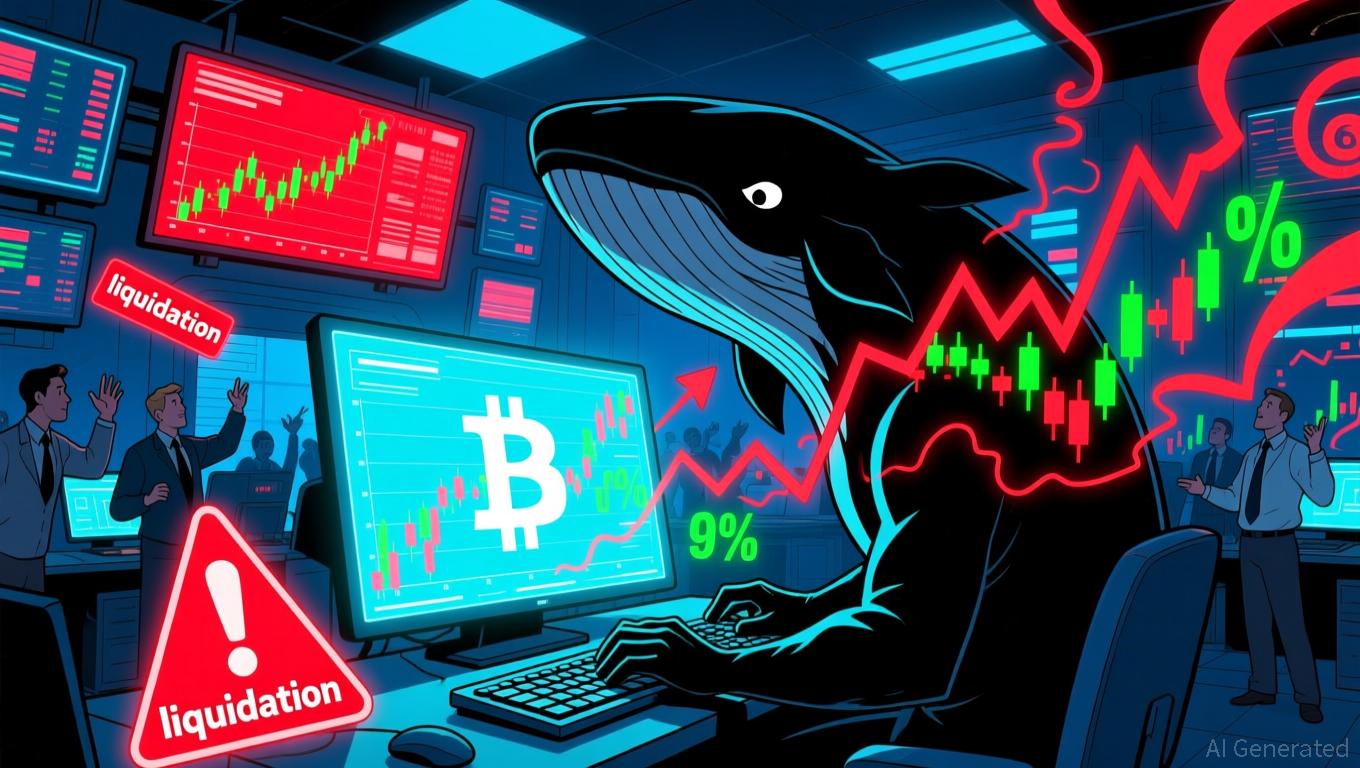Aave News Today: The Two Sides of DeFi: Aave's Expansion Increases Volatility Concerns
- Aave's AAVE token faces volatility risks near 0.57 support level, with whale accumulation and leveraged positions amplifying short-term instability. - A major Aave whale added 24,000 AAVE tokens (total 276,000) at $165 average cost, but remains vulnerable to repeat October 11 liquidation risks. - A $80M WBTC long position on Aave approaches $65,436 liquidation threshold, threatening forced selling and downward price pressure. - Tangem's Aave-integrated stablecoin yield feature highlights protocol's DeFi
The

A prominent Aave whale has recently increased their holdings, acquiring 24,000 AAVE tokens and bringing their total to 276,000 AAVE at an average entry price of $165 each. This accumulation,
At the same time,
These risks are further magnified by Aave’s growing footprint within the DeFi sector.
Technical analysis points to a fragile outlook for the AAVE token. Both traders and analysts are watching the 0.57 Fibonacci retracement as a crucial psychological level. A breach could lead to a wider selloff, especially if liquidations pick up pace. “The market is on the verge of a correction,” commented one DeFi strategist, emphasizing that the actions of major holders and leveraged traders often serve as early warnings of broader market stress.
At present, Aave’s ecosystem presents both opportunities and risks: while innovation and user growth are accelerating, the same factors that drive expansion could also introduce volatility if not carefully managed.
Disclaimer: The content of this article solely reflects the author's opinion and does not represent the platform in any capacity. This article is not intended to serve as a reference for making investment decisions.
You may also like
Bitcoin News Update: Major Whale Places $87 Million 3x Leveraged Bet Opposing BTC Surge Amid Divided Market
- A Hyperliquid whale opened a $87.58M 3x BTC short, contrasting with bullish market trends and other traders' strategies. - Another 20x $131M short faces liquidation risk if BTC surpasses $111,770, while $343.89M in 24-hour liquidations highlight short-position vulnerability. - Technical indicators (RSI 66, 15/1 buy/sell signals) and institutional BTC purchases support upward momentum despite liquidity risks on Hyperliquid. - Diverging whale strategies and macro factors like Fed policy underscore crypto's

Ethereum News Update: Major Institutions View Ethereum as a Key Asset, Outpacing ETF Investments
- 68 publicly traded firms now hold 12.7 million ETH, surpassing all Ethereum spot ETFs' 11.3 million holdings as of July 2024. - Firms like Coinbase and Gemini lead corporate accumulation, while banks like Fidelity expand crypto custody services for institutional clients. - Analysts cite regulatory clarity and improved risk frameworks as drivers, with 72% of institutional investors boosting crypto allocations in 2024. - Critics warn of market manipulation risks as corporate holdings now control 54% of ins
Breet's Enhancement Addresses Africa's Cryptocurrency Instability and Delayed Transactions
- Breet 3.0 Pro Max upgrades Africa's OTC crypto platform with USD wallets, instant transfers, and flat fees to combat volatility and slow settlements. - Key features include stable dollar holdings, peer-to-peer transfers bypassing banks , and automated issue resolution to reduce transaction friction. - Business tools now offer multi-currency templates, VIP tiers for high-volume traders, and security dashboards tracking account activity. - The update addresses Africa's crypto challenges by stabilizing purc

DeFi's Automation Shortfall Addressed: Orbs Introduces dSLTP to Achieve CeFi-Grade Risk Control
- Orbs launches dSLTP, a decentralized stop-loss/take-profit protocol for DEXs, bridging CeFi automation with DeFi. - The protocol automates risk management via on-chain orders, reducing real-time monitoring needs during volatility. - Built on Orbs' Layer-3 infrastructure, it enhances DEX functionality with CeFi-grade tools while maintaining decentralization. - This innovation addresses DeFi's automation gap, potentially driving DEX adoption and institutional-grade on-chain trading.
